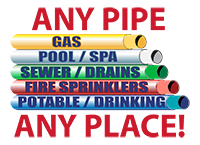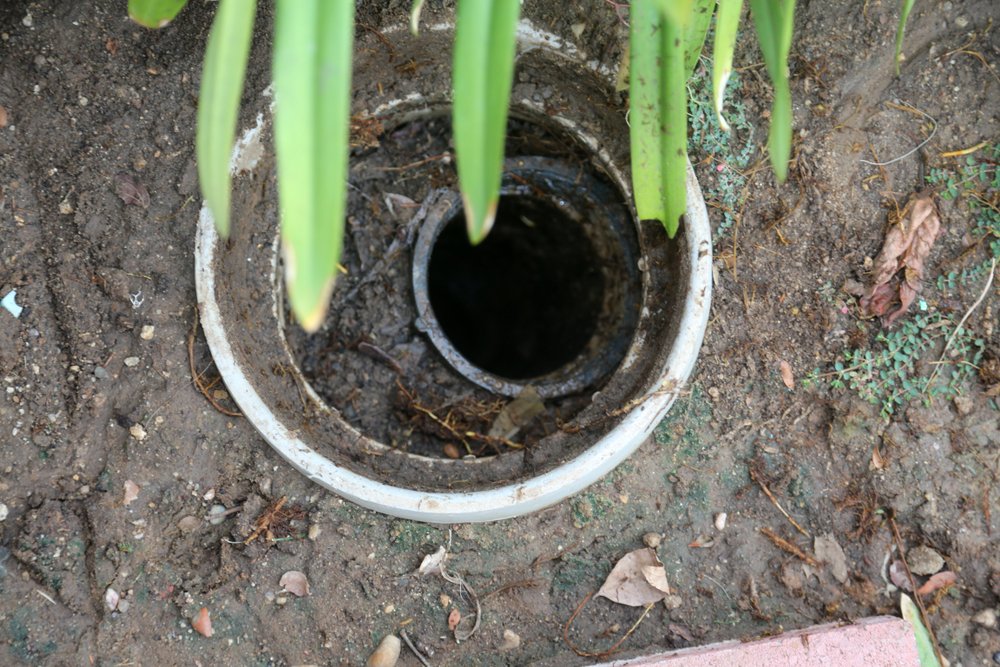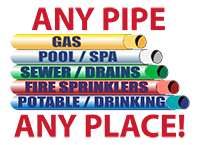Every San Diego homeowner should understand the importance of a clear main sewer line. This vital pipe silently removes wastewater from your house, ensuring a healthy and sanitary environment. But blockages can happen, causing frustration and disruption.
If you suspect a clog in your main sewer line, don’t panic! This guide will help you identify the signs and explore some DIY methods for how to unclog the main sewer line. We’ll also discuss when it’s best to call a professional plumber.
Understanding the Main Sewer Line
The Main Sewer Line: Your Drainage Champion
Imagine your home’s plumbing as a network of roads. Fixtures like sinks, tubs, and toilets act as individual homes along these roads. The main sewer line is the highway connecting all these residences to the city’s sewer system.
This wide-diameter pipe collects wastewater from all your drains and safely transports it away from your property.
Common Culprits of Clogged Main Sewer Lines
Even the most reliable heroes can face challenges. Here are some frequent culprits that can cause clogs in your main sewer line:
- Grease and Oil Build-up: Over time, pouring grease, cooking oil, or fatty substances down the drain can solidify and accumulate on the pipes’ interior.
- Tree Root Intrusion: Tree roots are persistent and can weasel their way into even the smallest cracks in sewer lines. As they grow, these roots can penetrate the pipes, causing blockages and damage.
- Foreign Objects: Accidental flushing of non-biodegradable items like wipes, feminine hygiene products, or dental floss can create clogs in the main sewer line. These items are not designed to break down in the sewer system and can easily snag and cause blockages.
- Sediment Accumulation: Over time, mineral deposits and other debris can settle and accumulate in the bottom of the main sewer line.
Signs of a Clogged Main Sewer Line
The main sewer line is the hidden hero of your plumbing system, quietly whisking away wastewater from your entire house.
When this vital passage gets blocked, sewage backups can occur, impacting your entire plumbing system and creating a potentially unsanitary situation.
So, how do you know if you’re facing a clogged main sewer line and not just a localized drain issue? Here are the three critical warning signs to watch out for:
- Slow Drainage Everywhere: If your house’s toilets, sinks, and tubs are draining sluggishly, it strongly indicates that the clog is located in the main sewer line, not in an individual drainpipe.
- Foul Odors: Sewage backups are not known for their pleasant aroma. Suppose you detect unpleasant smells from drains throughout your house.
In that case, it’s a sure sign that wastewater isn’t flowing freely and could be backing into your pipes. This indicates that you need to address the clog as soon as possible.
- Gurgling Sounds: Have you heard gurgling noises coming from your drains? These sounds occur when air or water struggles to move through a blocked drainpipe. If the clog is closer to a particular fixture, you might hear these gurgling sounds from specific drains.
DIY Methods for Clearing a Clogged Main Sewer Line
The Plunger: A Classic Weapon
A trusty plunger can sometimes dislodge a clog in the main sewer line, especially if it’s located closer to your home. Here’s how to wield your plunger effectively:
- Gather Your Forces: Ensure there’s enough water in the toilet bowl or sink to create a seal around the plunger. If necessary, add a bucket of water to create an adequate water level.
- The Plunge: Push and pull the plunger vigorously for several minutes. Imagine you’re trying to compress air out of a sealed container. A good, forceful plunge is key.
- Listen for Victory: A successful plunge might produce a sucking sound, indicating the clog has dislodged.
- Test Your Success: Flush the toilet or run water down the drain to see if the clog has cleared. If not, repeat the plunging process or consider another method.
Safety First: When using a plunger, wear gloves to protect yourself from any splashes or contact with wastewater.
Natural Drain Cleaners: A Gentle Approach
Looking for a more natural approach? A homemade drain cleaner made with baking soda and vinegar can sometimes break down minor clogs. Here’s a recipe:
- Mix It Up: Pour half a cup of baking soda down the drain, followed by a cup of white vinegar. The mixture will fizz as it reacts – that’s the cleaning power at work!
- Let it Sit: Allow the mixture to sit for at least 30 minutes, or even overnight for tougher clogs.
- Flush it Out: Run hot water down the drain to flush the solution and hopefully the dislodged clog.
Caution! Never mix bleach and ammonia, as this can create harmful fumes.
The Plumbing Snake: For the More Daring DIYer
A plumbing snake, also known as an auger, is a long, metal cable that can be inserted into the drain to break up and remove clogs. While effective, snaking a drain requires some plumbing know-how and can be messy. Here are some tips if you choose to go this route:
- Safety First: Wear gloves and eye protection when using a plumbing snake.
- Feed the Beast: Slowly insert the snake cable into the drain, feeding it until you feel resistance.
- Turn and Crank: Turn the crank handle to rotate the cable and hopefully break up the clog.
- Slowly Remove: Carefully withdraw the snake, removing any debris that gets caught on the cable.
- Test and Repeat: Run water down the drain to see if the clog is cleared. If not, you might need to repeat the process or call a professional plumber.
San Diego Plumbing & Pipelining’s Professional Solutions
Sometimes, even the bravest DIY warriors need backup. Clogged main sewer lines can be stubborn, and if your attempts at unclogging haven’t been successful, it’s time to call in the experts.
San Diego Plumbing & Pipelining boasts a team of licensed and experienced plumbers equipped with advanced tools and techniques to tackle even the toughest clogs. Here’s why you should consider San Diego Plumbing & Pipelining for your main sewer line woes:
Advanced Hydro Jetting
We utilize a powerful weapon in their arsenal: hydro jetting. This innovative technology employs a high-pressure water stream to scour and remove clogs from pipes. Imagine a powerful jet stream blasting away debris!
Here’s how hydro jetting works:
- A plumber inserts a specialized hose equipped with a high-pressure nozzle into the main sewer line.
- The nozzle propels a powerful stream of water, effectively clearing away grease buildup, tree roots, debris, and even stubborn clogs.
- The high-pressure water scours the entire pipe wall, leaving it clean and free of any lingering blockages.
Benefits of Hydro Jetting for Main Sewer Line Clogs:
- Effective and Thorough: Hydro jetting is a highly effective method for clearing even the most stubborn clogs. It can dislodge grease, roots, and debris that other methods might miss.
- Safe for Pipes: Unlike some drain cleaning methods, hydro jetting is safe for your pipes. The high-pressure water stream cleans without damaging the pipe material.
- Long-lasting Results: Hydro jetting not only clears existing clogs but also helps prevent future blockages by thoroughly cleaning the pipes.
Video Inspection Services
Before recommending any solution, San Diego Plumbing & Pipelining can perform a video inspection of your main sewer line. This innovative technique utilizes a tiny camera mounted on a flexible cable.
The camera is inserted into the drain, providing a real-time video feed of the inside of the pipe.
Here’s a glimpse into video inspection services:
- The plumber feeds the camera-tipped cable into the main sewer line.
- The camera transmits a live video feed to a monitor, allowing the plumber to pinpoint the exact location and nature of the clog.
- With a clear view of the problem, the plumber can recommend the most appropriate solution for your specific situation.
By combining video inspection with their expertise, San Diego Plumbing & Pipelining can ensure a targeted and efficient repair, saving you time and money in the long run.
Preventative Maintenance Tips
By following some simple preventative maintenance tips, you can keep your drainage system healthy and happy. Here are some key strategies:
- Be Mindful of What Goes Down the Drain: This might seem obvious, but it’s crucial to avoid pouring grease, oil, or food scraps down the drain. These substances can solidify and contribute to clogs over time.
- Fight the Fat Fight: Cooking oil, even in small amounts, can solidify and build up inside your pipes. It’s best to dispose of used cooking oil responsibly. Let it cool completely, then pour it into a container and dispose of it with your regular trash.
- Don’t Flush the Unflushable: Your toilet is not a trash can! Avoid flushing items like wipes, hygiene products, dental floss, or anything other than toilet paper and human waste.
- Schedule Regular Inspections: Just like your car, your plumbing system benefits from regular checkups. Consider scheduling a professional drain inspection by San Diego Plumbing & Pipelining every 1-2 years. This allows them to identify any potential problems early on before they turn into major clogs.
When to Call a Professional
- Persistent Clogs: If you’ve tried plunging, homemade drain cleaners, or snaking the drain, and the clog persists, it’s likely a more stubborn blockage requiring professional intervention.
- Multiple Clogged Drains: Clogged drains in multiple fixtures simultaneously indicate a clog in the main sewer line, beyond the reach of DIY solutions.
- Sewage Backups: If you experience sewage backups overflowing from drains or toilets, it’s a plumbing emergency requiring immediate professional attention. This situation poses a health hazard and necessitates prompt action.
- Strong Odors: Persistent foul odors emanating from drains can signify a clog deep within the main sewer line, beyond the reach of DIY methods.
- Lack of Plumbing Knowledge: If you’re uncomfortable or lack experience with plumbing tasks like snaking a drain, it’s always best to call a professional to avoid causing further damage.
For Help with Unclogging the Main Sewer Line in your Home, Contact the San Diego Plumbing & Pipelining Experts Today
A free-flowing main sewer line is the unsung hero of your plumbing system. It silently whisks away wastewater, ensuring a clean and sanitary environment in your San Diego home. But blockages in this vital pipe can cause frustration and disruption.
Preventative Measures are Key
The good news is that clogs can often be prevented with some simple practices. Be mindful of what goes down your drains, avoiding grease, oil, and non-flushable items. Regular inspections and cleanings can also help identify and address potential problems before they escalate.
When DIY Methods Fall Short
If you suspect a clog in your main sewer line, there are signs to watch out for: slow drainage in multiple fixtures, unpleasant odors, and gurgling sounds in the pipes. While DIY methods can sometimes address minor clogs, professional help is often the best course of action for persistent blockages or when you lack plumbing experience.
San Diego Plumbing & Pipelining: Your Partner in Unclogging Expertise
San Diego Plumbing & Pipelining boasts a team of licensed and experienced plumbers equipped to handle even the toughest main sewer line clogs. They offer a variety of services, including video inspections, hydro jetting, and drain snaking, to ensure an accurate diagnosis and efficient solution.
Don’t wait for a minor clog to become a major headache! Contact San Diego Plumbing & Pipelining today. Their 24/7 availability ensures they’re there whenever you need them.
Take control of your plumbing system’s health. Contact San Diego Plumbing & Pipelining today for expert drain cleaning services and a free consultation!







